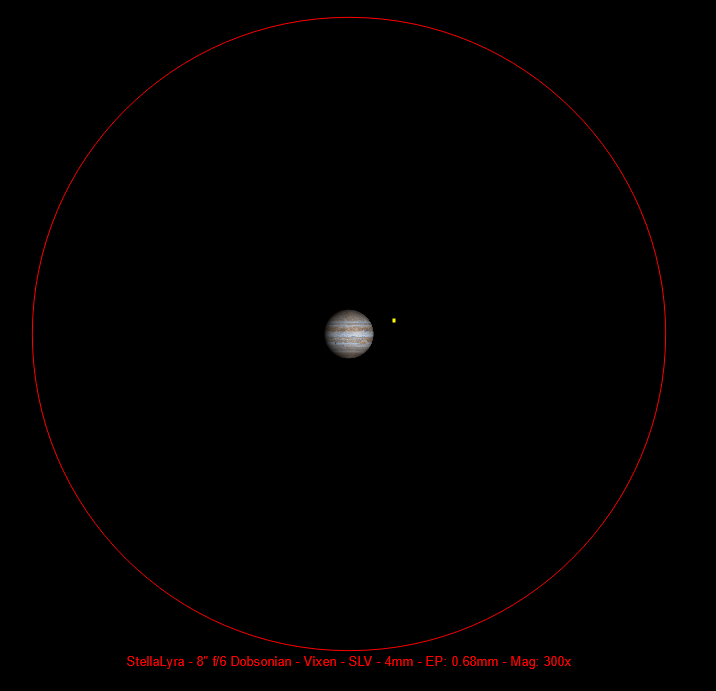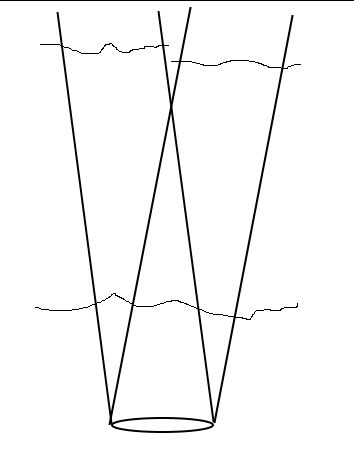
kingsbishop
-
Posts
16 -
Joined
-
Last visited
Content Type
Profiles
Forums
Gallery
Events
Blogs
Posts posted by kingsbishop
-
-
Here is something that I don’t understand if you want to reduce weight of the telescope how come people don’t use less focal length on telescopes and instead using smaller focal length eyepieces or barlows I understand that it would effect the eye relief but that wouldn’t be a big deal especially if your using a camera so what is the real reason do you lose light or something can someone please tell me?
-
Seriously visual has that magic in astronomy anyone can search up an image of Jupiter and see it and you don’t need a telescope for that and also visual has that magic to it.
however when it comes to adaptive optics all they talk about is improving the image where even so it’s only in boring infrared.
why don’t companies try to create adaptive optics for visual I understand that the isoplanatic angle is small but it is big enough to view Uranus, Neptune and few other objects.
I don’t understand what are the other problems of adaptive optics for visual astronomy?
can someone please tell me if adaptive optic kits on thorlabs or the MATX adaptive optics are good for visual astronomy?
-
Hello im wondering can the adaptive optics kits from thorlabs are they good for Visual astronomy for telescopes between 250mm-1 Meter telescopes?
-
On 28/11/2022 at 18:14, vlaiv said:
From the text I linked, isoplanatic angle is calculated to be 2" in visible light.
To put this into perspective, here is image of Jupiter as it would appear under high magnification with marked area of 2"x2":
Yellow dot is area corrected. In fact - at this scale, it is even less than that - about a single pixel, but I was not able to mark it that small with the tool I was using.
This is with x300 magnification.
Rest of the image would be "normally blurred" (or even a bit more than normally as it would be affected by deformed mirror - mirror would be deformed to correct just that tiny yellow patch, but it would cause additional blur for the rest of the image where deformation does not match the seeing).
But why are there no images in the visible light for uranus and neptune or the moons of Jupiter, Saturn, uranus and neptune or pluto if the isoplanatic angle is small enough for visible observing on those tiny objects why are they all in infarred?
-
Hello i am wondering there are 2 adaptive optics products I have my eye on that are still in development and I want to know if either of them work in the visible waveband and are they good for visual astronomy
is the MATX Adaptive optics kit good for visual astronomy and do they work in the visible waveband?
is the AO-2 and AO-5 adaptive optics by Don Bruns good for visual astronomy and do they work in the visible waveband?
If not are there any other amateur adaptive optics in development that work in the visible waveband and are good for visual astronomy?
-
3 hours ago, vlaiv said:
It has nothing to do with brightness - it has to do with how atmosphere and light behave.
Here is simplified diagram:
Single point in the sky is effectively at infinity as far as we are concerned, so incoming light from that point that hits our telescope is effectively "parallel". For this reason - any point in the sky will actually have "a pillar" of light that is as wide as telescope aperture, but all these pillars will be at slightly different angle.
For example - Jupiter is about 45 arc seconds in diameter - that means that one side of it is "at an angle" of 45 arc seconds to the other side (or these pillars are at that angle).
Because atmosphere is causing turbulence - any two pillars that are at an angle will first pass thru same piece of atmosphere (bottom part of image) and then slowly diverge as they go up in atmosphere. At some point they will pass thru completely separate pieces of atmosphere.
For small angle - pillars will pass thru same piece of atmosphere for the most part - for large angle - they will quickly diverge and become separate.
As soon as you have two different parts of atmosphere act on light beams - they will be distorted differently. Adaptive optics can correct for either one or the other - but can't do both.
In reality - there is infinite number of such pillars (for every point in the sky) and only group of them that are really close together - and pass thru same piece of atmosphere, can be corrected at the same time. This is isoplanatic angle that was mentioned before - maximum angle that can separate two pillars that will have mostly the same distortion.
It is very small - few arc seconds, while Jupiter is x20 larger than that in diameter - so only very small segment can be corrected (in visible light) at any given moment. Rest of the image will be blurry.
Due to nature of light - small telescopes can't even resolve image that is so small - 2" in diameter (or if you will they can cover it up with 10 or so pixels - and no more resolution than that).
What I mean is because Jupiter is light around the whole disk of the planet adaptive optics can detect the atmosphere distortion around the whole disk of the planet by using the planet as a guide star and then if it is light around the whole planet then shouldn’t the adaptive optics be able to see the distortion around the whole planet?
-
On 28/11/2022 at 18:14, vlaiv said:
From the text I linked, isoplanatic angle is calculated to be 2" in visible light.
To put this into perspective, here is image of Jupiter as it would appear under high magnification with marked area of 2"x2":
Yellow dot is area corrected. In fact - at this scale, it is even less than that - about a single pixel, but I was not able to mark it that small with the tool I was using.
This is with x300 magnification.
Rest of the image would be "normally blurred" (or even a bit more than normally as it would be affected by deformed mirror - mirror would be deformed to correct just that tiny yellow patch, but it would cause additional blur for the rest of the image where deformation does not match the seeing).
But can’t it do the whole planet because the whole planet is bright enough for it to work?
-
On 27/11/2022 at 09:12, vlaiv said:
It would be useless for amateur observing needs.
Problem is that seeing is both time and direction dependent. Each point in the sky has its own wavefront aberration and is in principle different to any other point in the sky.
To be precise - there is very small "window" around a point that has same / similar aberration - something like few arc seconds in radius - and this is zone that adaptive optics works in.
Such system can't even correct field large enough for planetary observation (in visible light) - it is mostly used for stellar sized objects.
If it only corrects a small part then why don’t you use higher magnification?
-
On 25/11/2022 at 19:49, DaveS said:
Oh well, you didn't make that clear in your original post.
For planetary or double stars the normal route is lucky imaging to dodge the seeing.
As a DSO imager it's not really my field, there are planetary specialists on here who would be better placed to give an answer.
Still I can only image so much and I like to do visual Mabye the MATX adaptive optics when it comes out I wonder if planewave adaptive optics would do the trick?
-
On 22/11/2022 at 01:18, DaveS said:
You won't find true adaptive optics for amateur level telescopes, at least not yet.
The units sold as "adaptive optics" are more like "active optics" that can take out first order errors caused by gross star movements, but won't correct for wavefront errors as the professional equipment found on big telescopes, which also need laser generated artificial "guide stars" as a reference.
There have been threads in the Imaging section, which basically say that they are only of use for matching flexure in tandem telescopes.
I’m talking for planetary and double stars.
-
Hello I’m wondering if planewave adaptive optics work for viewing in the visible light spectrum and work with visual astronomy?
and I’m not too sure if you have heard of the MATX team but they are developing amateur adaptive optics and I am wondering if they can be used for viewing in the visible light spectrum and work with visual astronomy?
-
Hello I was wondering can you reach the diffraction limit on any telescope by using the lucky imaging technique?
I would think if the seeing is really bad just use a shorter exposure time so say if you had a giant telescope and your trying to image Jupiter and you can do 0.000003 milliseconds exposure that is so short that can you reach the diffraction limit on even say a 10 meter telescope in poor seeing because 0.000003 milliseconds exposure is so short that it would freeze the atmosphere?
-
Hello I’m wondering if adaptive optics work on visual observing or if there is something like that in development?
-
Hello I searched up amateur adaptive optics and I found some on Thorlabs and I am wondering if it is worth it will I be able to reach the diffraction limit with amateur adaptive optics or are they no good and don’t improve seeing?
-
Hello I am wondering for example if I have a super large telescope with a maximum resolving power of 0.01 arc seconds would it be possible to resolve 0.01 arc seconds of detail by stacking billions of frames to correct for seeing conditions or is that limited as well.
I would think if the seeing conditions are not good just stack way more frames.
so what I’m saying is no matter how bad the seeing conditions are would it be possible with a super large telescope with no adaptive optics for be able to reach the diffraction limit of 0.01 arc seconds by stacking like trillions of frames to get past the bad seeing conditions or is that limited as well?







Is there any way you can tell if a star is either hydrogen shell burning or helium burning in its core (entered the horizontal branch or blue loop)
in Physics, Space Science and Theories
Posted
Hello I am wondering is there a way you can tell by using the spectral class of a star or any other way I can find out if a star has entered the horizontal branch or blue loop phase or if it’s on the hydrogen shell burning phase or if it’s on the top or bottom line of the horizontal branch or blue loop phase?